Mark Sisson's Blog, page 173
August 14, 2017
Dear Mark: Why are Male Fertility and Testosterone Levels so Low?
 For today’s edition of Dear Mark, I’m answering just one question. But it’s a good (well, maybe not good, but certainly important) one: Why is male fertility on the rise and testosterone on the wane? The popular notion is that women flushing birth control pills and peeing estrogen-rich urine into the public water supply are the primary reasons for the sex hormone issues facing men, but I’m not so sure. Let’s explore what else might be causing the problem.
For today’s edition of Dear Mark, I’m answering just one question. But it’s a good (well, maybe not good, but certainly important) one: Why is male fertility on the rise and testosterone on the wane? The popular notion is that women flushing birth control pills and peeing estrogen-rich urine into the public water supply are the primary reasons for the sex hormone issues facing men, but I’m not so sure. Let’s explore what else might be causing the problem.
In the comments from last week, tribal wrote:
I also heard about a report that indicated that our water supply is also contains more and more estrogen, primarily due to the increased use of birth control tablets, which find their way into the water supply – I need to research the truth to this report. testosterone levels have halved for men in the last 20 years, and at this rate will will end up self-destructing.
The main thrust of your assertion is true.
The water supply is full of estrogenic compounds.
Male sex hormones have plummeted in the last half century and show little sign of rebounding.
However, birth control pill use isn’t the biggest culprit. In a 2011 review of the evidence, researchers found that the contribution of synthetic birth control estrogens to the total estrogen content of public water was negligible. Women flushing pills or excreting urinary estrogen do not appear to be the main cause of estrogen in the water supply.
Estrogen in the water may not even be the main cause of the growing male fertility problem. And if it were, what exactly could you do beside drink more bottled mineral water (and even that’s not a guarantee)? Spend thousands on expensive filters, stress out every time you had to satisfy a basic biological requirement (drink water)? It makes more sense to worry about the things you can control, like what you eat or how you live. As it turns out, the biggest culprits for impaired male fertility are probably dietary and lifestyle-related.
Omega-6/3 intake: The polyunsaturated fats we eat are incorporated into the structure of our cells—all the cells. Omega-6-rich cellular membranes are less stable than membranes with more MUFA, SFA, and omega-3 fats, and that goes for cellular membranes of sperm cells. Studies show that men with higher omega-6:omega-3 ratios have lower sperm counts, less sperm motility, and more infertility.
Oxidized fat intake: Most of the polyunsaturated fat most people eat has been refined, oxidized, and exposed to tons of heat, light, and oxygen. Omega-6 fatty acids are already liable to oxidize and turn rancid. They way we treat them before eating—as frying mediums for days on end, in high-heat stir fries, in packaged junk food subjected to high heat and left on the shelf for months—guarantees they’re almost completely damaged. The higher the MDA (a metabolite of oxidized PUFA) in the sperm, the greater the chance of male infertility.
Low sun intake: Most people fear the sun, focusing only on the skin cancer risk and ignoring the myriad benefits of sun exposure, one of which is the fact that it helps us synthesize vitamin D. Vitamin D is a pro-hormone, meaning we use it to produce a variety of hormones. One of the most important products of vitamin D is testosterone, the male sex hormone. Without adequate testosterone, reproduction becomes difficult. We produce less sperm, lose our libido, and become less attractive to potential mates.
Low red meat intake: The campaign against red meat has worked. Most people still think red meat is inherently dangerous. Red meat consumption is at an all-time low, and chicken consumption is at an all-time high. This development has probably caused major problems for male fertility. Red meat is the best and most reliable source of zinc, an important nutrient for male fertility. Red meat is the best source of carnitine, an amino acid with pro-fertility effects. Red meat is higher in fertility-protective saturated fat and monounsaturated fat and lower in unstable omega-6; chicken is lower in SFA and far higher in omega-6.
Those are the big whoppers, as I see it, the factors regular people suffering from low testosterone/fertility can actually target with the most ROI. Sure, it’s not going to happen overnight. Those seed oils are everywhere. Everyone loves French fries, and no one wants to know how long those fryers have been heating the same oil. Red meat remains scary, as does the sun. But it’s physically possible for a regular person to make four simple changes—eat less omega-6, have some canned sardines twice a week, choose steak over chicken, and go outside every day—that could have huge positive ramifications.
There are other major causes, too, including perhaps the estrogen in the water issue as well as other estrogen-like (xenoestrogen) pollutants. If you guys are interested, I can explore this topic more down the line.
Thanks for reading, everyone. I’d love to know your take on the issue. Let’s hear it!
The post Dear Mark: Why are Male Fertility and Testosterone Levels so Low? appeared first on Mark's Daily Apple.



August 13, 2017
Weekend Link Love – Edition 464
 RESEARCH OF THE WEEK
RESEARCH OF THE WEEKMore than 1 in 8 Americans are alcoholics.
Transcranial magnetic stimulation can reduce meth cravings.
The conventional wisdom about back pain is being upended.
NEW PRIMAL BLUEPRINT PODCASTS
Episode 181: Brad Kearns and Elle Russ Part 2: Elle and Brad continue their chat about the upcoming Primal Endurance Online Mastery Course.
Each week, select Mark’s Daily Apple blog posts are prepared as Primal Blueprint Podcasts. Need to catch up on reading, but don’t have the time? Prefer to listen to articles while on the go? Check out the new blog post podcasts below, and subscribe to the Primal Blueprint Podcast here so you never miss an episode.
CrossFit Training: How Going Primal Will Enhance Recovery
The Definitive Guide to Bone Broth Benefits
CrossFit Training: How to Add Mass and Build Strength With Primal
INTERESTING BLOG POSTS
Nutrition textbooks for self-learning.
How exercise affects appetite.
MEDIA, SCHMEDIA
The zoo whose entrance fee is some dirty fingernails.
Monsanto ghostwrote the “independent” safety reviews of its flagship product, Roundup.
EVERYTHING ELSE
The Onion gets eerily close to reality.
Why Aziz Ansari quit the Internet.
THINGS I’M UP TO AND INTERESTED IN
Lectures I wish I could attend: My buddy Chris Armstrong is putting on some incredible Re-Find Health events, including Dr. Kirk Parsley in LA on October 14, Gary Taubes in Stockholm on November 16, and Gary Taubes again in London on November 18 and 19.
I’m impressed: Freediving is tough enough, but how about freediving in Iceland?
Article I’m pondering: “Have smartphones destroyed a generation?”
Beautiful interview I enjoyed: cultural anthropologist (and daughter of Margaret Mead) Mary Catherine Bateson on “composing a life” versus “juggling” one, and practicing “active wisdom” as we age (and other things).
Man do I wish we still had prehistoric megafauna: Giant sloths built huge caves you could drive a car into.
RECIPE CORNER
Paleo chicken chow mein using sweet potato noodles.
Asian chicken tacos with cassava tortillas (or lettuce wraps).
TIME CAPSULE
One year ago (Aug 13– Aug 19)
Why Grok Didn’t Have Work-Life Balance and Neither Will You – Balance is an illusion, and that’s okay.
8 Confidence Building Exercises for Primal Success – Confidence is everything.
COMMENT OF THE WEEK
“What is ‘leftover’ coffee.. how does that happen? LOL”
– My thoughts exactly, Jessica.

The post Weekend Link Love – Edition 464 appeared first on Mark's Daily Apple.



August 12, 2017
PRIMAL KITCHEN® Collagen Fuel Fudgsicles
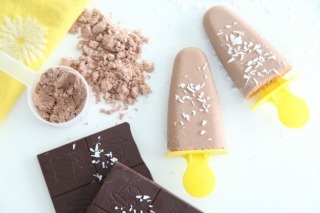 If ever there was a dessert that you could feel good about eating, this is it. Made only from wholesome, healthy fat ingredients, these intensely rich frozen fudgesicles also provide collagen and antioxidants with every lick. Dark chocolate and PRIMAL KITCHEN Collagen Fuel are whisked into coconut oil, coconut milk and macadamia butter, then frozen. These are fat bombs on a stick, and unbelievably good.
If ever there was a dessert that you could feel good about eating, this is it. Made only from wholesome, healthy fat ingredients, these intensely rich frozen fudgesicles also provide collagen and antioxidants with every lick. Dark chocolate and PRIMAL KITCHEN Collagen Fuel are whisked into coconut oil, coconut milk and macadamia butter, then frozen. These are fat bombs on a stick, and unbelievably good.
Dense and chewy like regular fudgesicles, but much less sweet, these bars are for dark chocolate and coconut lovers. Easy to make, and easy to love, they’re a frozen treat you can enjoy all summer.
Servings: 6 Fudgsicles
Time in the Kitchen: 10 minutes, plus a few hours to freeze
Ingredients

½ cup melted coconut oil (120 ml)
2 ounces dark chocolate, chopped into small pieces (60 g)
¾ cup canned, full-fat coconut milk (180 ml)
1 scoop Primal Kitchen Chocolate Coconut Collagen Fuel (18 g)
½ cup macadamia butter* (130 g)
Instructions

*To make macadamia butter, simply blend raw or roasted unsalted macadamia nuts in a food processor until very smooth.
Combine coconut oil and dark chocolate in a medium bowl. Microwave in 15 seconds intervals, stopping to stir each time, until chocolate is melted. Stir vigorously to combine the chocolate and coconut oil.
Whisk in coconut milk, Primal Fuel and macadamia butter until smooth.
Pour the liquid into popsicle molds. Freeze until solid.
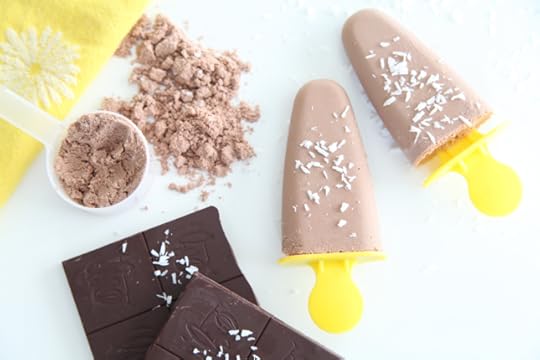
The post PRIMAL KITCHEN® Collagen Fuel Fudgsicles appeared first on Mark's Daily Apple.



August 11, 2017
I’m Back to Being Me!
It’s Friday, everyone! And that means another Primal Blueprint Real Life Story from a Mark’s Daily Apple reader. If you have your own success story and would like to share it with me and the Mark’s Daily Apple community please contact me here. I’ll continue to publish these each Friday as long as they keep coming in. Thank you for reading!
 As I bent down to tie my shoe, I had to breath out to reach the laces. Before I was done tying the other shoe, I had to sit up and breathe. My belly was in the way, and was forcing me to not be able to breath while bent over. I sat up, and cussed inwardly. That’s enough! In my younger years I had raced Moto-X, I had been into body building. I was in martial arts and was a black belt. I had played all sorts of demanding sports. And now I couldn’t even tie my shoe without coming up for air.
As I bent down to tie my shoe, I had to breath out to reach the laces. Before I was done tying the other shoe, I had to sit up and breathe. My belly was in the way, and was forcing me to not be able to breath while bent over. I sat up, and cussed inwardly. That’s enough! In my younger years I had raced Moto-X, I had been into body building. I was in martial arts and was a black belt. I had played all sorts of demanding sports. And now I couldn’t even tie my shoe without coming up for air.
After my son was born I quit the gym to spend more time with family. 2-1/2 years later when my daughter was born I had gained 20 lbs and had stopped working out all together. And now, 3 years after that I couldn’t even tie my shoe. On top of that, I had a lower back injury caused by coughing. Yeah, that’s right, I coughed and my back when out. What the…? I stepped on the scale. 238lbs.
Now I was dealing with the voice inside insisting I could never get back to where I was. It was too hard, I didn’t have the time. I didn’t want to give up good food. I didn’t want to feel guilty if I missed a week of working out, or ate something I wasn’t supposed to. At 238 lbs, I felt tired, guilty, ashamed, and unmotivated.
A co-worker told me about Mark’s books, Primal Blueprint and Primal Endurance. I bought the audio books and started listening to them on my way to and from work. “Inspired” is the only word I can come up with. This sounded achievable. I could do this. It was time to get healthy for my kids, my wife, and myself.
I followed the books. I ran, biked, worked out, and played. I played hard. I bought a HRM and used it often. At first only able to walk to stay within my aerobic zone. I stayed with it.
I stuck with the Primal eating for a month, and dropped 15 lbs easily without once feeling like I had given anything up! I ran 3 miles at the beach the next month then played with my kids all day. The month after that I ran 5 miles in just over an hour averaging 138BPM, then did yard work and played soccer with my kids all day, no crash, no cravings for carbs. I ate a steak with veggies that night with friends. They said “Allen, you’re looking great! You’ve lost a lot of weight. Are you cheating on your diet today?” I just grinned. “Thanks, I’ve lost 35 lbs, and it’s not a diet.”
I’m not back to where I was. I’m back to being me, and I don’t care where I’ve been. I’m here now and I’m loving it. Thank you, Mark.
Allen Weed

Want to make fat loss easier?
Try the Definitive Guide for Troubleshooting Weight Loss for free here.
The post I’m Back to Being Me! appeared first on Mark's Daily Apple.



August 10, 2017
CrossFit Training: How Going Primal Will Enhance Recovery
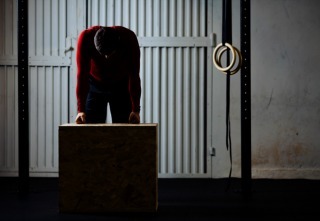 Exercise is a major stressor. But it’s a major acute stressor, rather than a chronic one. It hits us, then it’s over, and we recover. When the next session rolls around, we’re better/faster/stronger/fitter. We adapt. At least, that’s how exercise is supposed to go if you have enough buffer time between sessions. Most people do provide enough buffer time between their exercise sessions to promote recovery. Many provide too much, leading to detraining.
Exercise is a major stressor. But it’s a major acute stressor, rather than a chronic one. It hits us, then it’s over, and we recover. When the next session rolls around, we’re better/faster/stronger/fitter. We adapt. At least, that’s how exercise is supposed to go if you have enough buffer time between sessions. Most people do provide enough buffer time between their exercise sessions to promote recovery. Many provide too much, leading to detraining.
Some people go the other way. For these people who train 4, 5, 6 times a week, workouts can become, for all intents and purposes, chronic stressors. String enough acute stressors together with small enough buffers in between and you’re stewing in low level inflammation. Never quite recovering, never quite wringing out as much adaptation as you should.
A regimen like CrossFit demands a lot from you. The workouts themselves are demanding, prescribing complex movements, high intensity, and high volume. The weekly schedule is rigorous, with some boxes recommending 4-6 workout sessions a week. This can produce incredible gains in strength, body composition, and overall fitness—if you’re careful to recover and avoid burnout. If you’re not careful, if you don’t optimize your recovery, CrossFit training can burn you out.
Notice if you’re feeling an increased fatigue you can’t shake, decreased work capacity, intense sugar cravings, or poor sleep. Any of these are signs you need to pay more attention and time to recovery. If you’re finding yourself more injury-prone, obviously that’s a major red flag whose message you should heed.
Today, I’m going to explain how going Primal offers unique and particular benefits to CrossFitters and anyone else engaged in intense training who wants to optimize their recovery.
I won’t go deep into everything that factors into recovery from workouts, either because I’ve already covered them or they aren’t unique to Primal. These include:
Calories: Your body needs food to recover.
Protein: You need it to build back up that muscle you’ve been putting through the wringer.
Carbs: Refilling that glycogen you just burned through is important if you plan on getting back out there tomorrow.
Fat: Saturated fat, monounsaturated fat, omega-3s, and cholesterol all contribute to muscle recovery and protein synthesis. Make sure you’re eating plenty of all four. I recommend including a large source of all four in your last meal on training days. There’s something special about giving your body a ton of testosterone/androgenic precursors to play with before bedtime, which is when most of the growing and recovering happens.
One big issue is time itself. If you’re training five times a week, you simply don’t have as much recovery time available as the person training three or four times a week. It’s a numbers game. You can’t change that. In this scenario, your recovery strategy becomes even more crucial, your time more precious.
Ancestral Sleep
I have to start with sleep. When it comes to recovery from your training, it’s almost everything. Let’s put it this way: If you could fix one thing and one thing only in order to enhance recovery, it would be sleep.
Sleep is when muscles grow. If you don’t sleep, you not only lose the opportunity to make gains. One study found that sleep deprivation actually increases urinary excretion of nitrogen, which could indicate muscle breakdown and loss of lean mass.
Sleep is when testosterone and growth hormone spike. Sleep loss increases the catabolic glucocorticoid family of hormones like cortisol and decreases the anabolic triad of testosterone, IGF-1, and growth hormone, accentuating the “degradation pathways” while reducing the “protein synthesis pathways.”
Bad sleep impairs insulin sensitivity and glucose tolerance. If we can’t tolerate glucose or utilize insulin’s effects, we’ll have major issues replenishing the glycogen we need to recover and come back for the next session.
Okay, so, “go sleep more” isn’t good advice. It’s what everyone says. It’s what everyone knows. But it’s damn difficult to put into practice. How can Primal help you sleep more? What do we offer that others don’t?
First, we offer an evolutionary framework for understanding why human sleep is so messed up. After hundreds of thousands of years of hewing our sleep patterns to the light/dark cycles of the natural world, we’ve suddely reversed it. We spend our days indoors, away from natural light, and our nights at home bathing in artificial light. And since light exposure to our eyes determines our circadian rhythm and how well we sleep, restoring our ancient relationship to light is a prerequisite for good sleep. It’s actually simple:
Expose yourself to natural light during the morning and daytime. Sunlight is a great source of blue light that keeps us awake at night (bad) and alert and energized during the day (good). It has to be real, natural light to set the circadian rhythm most effectively.
Limit artificial light at night. Blue light (from screens, smartphones) tricks your circadian rhythm into thinking it’s daytime all over again, which depresses melatonin and disrupts your sleep. A pair of UVEX blue-blocking safety goggles is an inexpensive workaround that really works.
For more details on putting the Primal sleep concepts into practice, read this post.
Better Food Quality, Better Recovery
I wish I could tell you to eat McDonald’s and cheese danishes, spaghetti and meatballs and fried calamari. I mean, you can. Go on. You’ll probably stay pretty fit if you’re doing CrossFit. But you won’t excel. And I can’t in good conscience say the quality doesn’t matter for your recovery.
The Primal Blueprint doesn’t stress the consumption of local, preferably organic produce, pastured animal products, and high-quality fats for superficial reasons. We have very good reasons for spending a little extra and taking a little more time to obtain better foods. We like eggs from bug-eating, grass-scrounging hens because they are extremely nutrient-dense and make our LDL more resistant to oxidative damage. We like grass-fed lamb because its fat comes pre-loaded with antioxidants that reduce carcinogenic formation during cooking. We like organic produce because it has, believe it or not, been shown to have higher levels of plant polyphenols and certain vitamins than its conventional counterparts.
Recovery is about reducing unnecessary inflammation. We’re already coming off a major spike in inflammation—thanks to the intense training session—and the last thing we need is more for no reason. When we eat higher quality foods, like pastured eggs, grass-fed ruminants, and organic produce, we’re reducing the inflammatory burden that otherwise impedes the recovery process. We avoid inflammation-producing foods like grains and industrial oils. On top of this, be mindful of your individual responses to other possible triggers like dairy, eggs, nightshades or even certain fruit in case they might be contributing to the problem.
Get Sunlight (or Vitamin D)
Sun exposure doesn’t just provide natural light that sets your circadian rhythm and promotes better sleep and recovery. It also helps recovery directly by increasing vitamin D production.
First off, vitamin D is a prohormone—a precursor of testosterone. Our muscles need testosterone to recover and build new tissue Studies show that replenishing one’s vitamin D levels and correcting deficiencies increases testosterone production.
In 2010, researchers took adults with severe vitamin D deficiency, tested how quickly they could replenish local ATP-PC for fast energy in the muscle, gave them supplements for 12 weeks, then tested ATP-PC replenishment rates again. Their average ATP-PC recovery time half life dropped from 34.4 seconds to 27.8 seconds after getting vitamin D up to snuff.
The faster your ATP-PC replenishes, the quicker you can call on it during intense efforts without needing so much glycogen or fat. The more testosterone you have at your disposal, the better your muscles will recover.
Other Stressors
Stress is stress is stress. If you’re losing your job and your marriage is falling apart and you’ve got a bad head cold and you just got a new puppy and you just found out you or your partner are pregnant, you’ve got a lot on your plate. All those add stress to your life and impact your ability to recover from your physical training. Of course, carving out some time to yourself to engage in physically demanding work can also relieve stress, but only to a point. Eventually, the physiological burden of balancing psychosocial stress and training stress becomes too much. At some point we all break down.
I have no specific advice for the specific stressors I listed because they’re different for everyone. Primal acknowledges that modern life poses unique challenges to the human organism. We may not run from hungry hyenas, face swarms of bees protecting their honey, stalk an animal for over a day only to step on a twig and send it bounding off to freedom, or engage in hand-to-hand combat with rivals, but we stress. To our bodies, these stressors are major. They don’t really stop accumulating, either, which creates a chronic stress situation that destroys recovery.
Rethink your stress. You’re gearing up to head out for a hunting party; of course your pulse is pounding (to deliver nutrients to important tissues) and you’re breathing fast (to grab extra oxygen for the task at hand) and you’re anxious (to breed caution and help you make the best decision). It’s just your Primal self trying to make sense of the impending task the only way it knows. That’s a good thing.
Recovery is a big piece of success in CrossFit, maybe the biggest. You really want to get this right. Luckily, going Primal has its benefits.
That’s it for today, everyone. Take care.
This article was co-written with Laura Rupsis, Level 1 CrossFit Certified, Primal Health Coach Certified, and owner of Absolution CrossFitin La Grange, IL.
The post CrossFit Training: How Going Primal Will Enhance Recovery appeared first on Mark's Daily Apple.



August 9, 2017
7 Healthy Coffee Ideas for Every Primal Taste
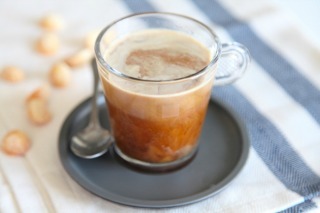 Normally, I’m deep in the thick of nutritional research or other heady topics midweek. Today, not so much. I have coffee on the brain after trying a few new concoctions recently. As I’ve noted in the past, coffee is a welcome part of the Primal Blueprint. Unlike traditional paleo, there’s no conflict here. While living healthily and sleeping well mean I don’t depend on coffee for energy, I consider it a positive staple in my diet, not to mention a pleasant ritual in my day.
Normally, I’m deep in the thick of nutritional research or other heady topics midweek. Today, not so much. I have coffee on the brain after trying a few new concoctions recently. As I’ve noted in the past, coffee is a welcome part of the Primal Blueprint. Unlike traditional paleo, there’s no conflict here. While living healthily and sleeping well mean I don’t depend on coffee for energy, I consider it a positive staple in my diet, not to mention a pleasant ritual in my day.
I’ve gone into extensive detail about the copious benefits—to overall health, to disease prevention, to cognitive function, even to fitness performance—in the past. Today, I’m all about the actual intake. There’s plenty to the why, but this post covers several Primal ways to enjoy it right now. Let’s dig in….
Mocha
Cacao nibs are loaded with polyphenols, and a great source of saturated and monounsaturated fat. Add coconut milk (or whole cream), plus a drizzle of coconut oil to smooth out the chocolate emulsion, and this dark chocolate mocha is brimming with healthy fats.
Ingredients
1/4 cup cacao nibs
1 cup coconut milk or whole cream
2 teaspoons melted coconut oil

Instructions
Bring coconut milk or whole cream to a simmer in a small pot. Turn off heat and add cacao nibs. Let steep 5 minutes.
Blend the cacao mixture and coconut oil in a blender on high speed until smooth and frothy, about 1 minute. Strain through a fine mesh strainer, pushing down on the solids to release the liquid. Add a sweetener if desired. Pour the cacao milk into hot coffee, or chill it before adding to iced coffee. The cacao milk will keep in the fridge for about 5 days.
Macadamia Cream
Macadamia nuts are sweet and buttery fat bombs. Blend ‘em up into smooth cream for a rich and fatty cup of coffee that also has delicious macadamia flavor.
Ingredients
2 tablespoons macadamia butter*
3 tablespoons hot water

Instructions
Whisk together macadamia butter and hot water until smooth. Pour into a fine mesh sieve placed over a bowl. Press down with a spoon to release the smooth and creamy liquid into the bowl and separate it from any grainy solids. Whisk the macadamia cream from the bowl into your hot coffee.
*To make macadamia butter, simply blend raw or toasted unsalted macadamia nuts in a food processor until very smooth
Tahini Coffee
The high-fat sesame paste called tahini turns into a surprisingly delicious keto-friendly dessert cream when whisked with molasses and whole cream. Eat it alone, or stir the cream into your coffee.
Ingredients
1 tablespoon tahini
1 teaspoon blackstrap molasses
2 tablespoons whole cream

Instructions
Whisk together tahini, molasses and cream until completely smooth. Whisk the tahini cream into your hot coffee (or, just eat it for dessert with a spoon).
Chai Golden Milk Coffee
This spiced coffee is anti-inflammatory and antioxidant-rich. Chai Golden Milk (named after the Indian tea and the addition of turmeric) is delicious in hot or cold coffee. It’s also delicious without coffee when you want an uplifting caffeine-free beverage.
Ingredients
1 cup coconut milk or whole cream
1/4 teaspoon ground turmeric
1 teaspoon freshly grated ginger or ¼ teaspoon ground ginger
¼ teaspoon ground cinnamon
¼ teaspoon ground cardamom
1 teaspoon coconut oil
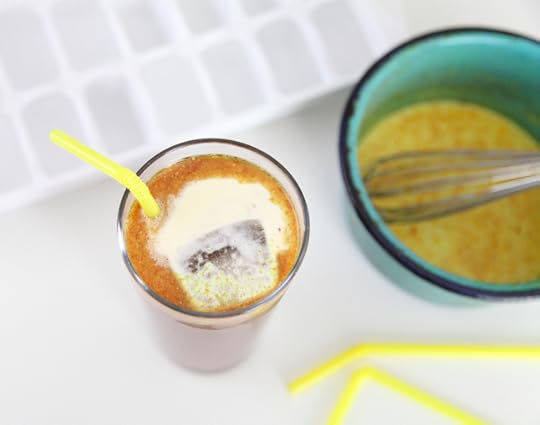
Instructions
Whisk milk, turmeric, ginger, cinnamon, cardamom and coconut oil in a small saucepan or pot and bring to a simmer. Remove from heat and let steep 5 minutes. Strain though a fine mesh strainer to remove the grit. Add a sweetener if desired. Pour as much as you like into your hot coffee, or chill the spiced milk for iced coffee.
Egg Frappe
A frothy, iced coffee drink with a boost from whole eggs and antioxidant- rich spices.
Ingredients
5 ounces coffee, double strength* (use twice the amount of ground coffee you would normally use for 5 oz water) (150 ml)
3 pastured eggs, whole
1 teaspoon raw honey (5 ml)
1/4 teaspoon vanilla (1.25 ml)
1/4 teaspoon of salt (1.25 ml)
1/4 teaspoon cinnamon (1.25 ml)
1/8 teaspoon cardamom (a pinch)
1/8 teaspoon turmeric (a pinch)
1/8 teaspoon cream of tartar** (a pinch)
2 ounces coconut milk (60 ml)
1 1/2 cups ice (a large handful)
*The coffee is brewed at double strength so the flavor isn’t diluted when blended with ice.
**Cream of tartar is optional. It helps stabilize the egg whites and make the drink frothier.
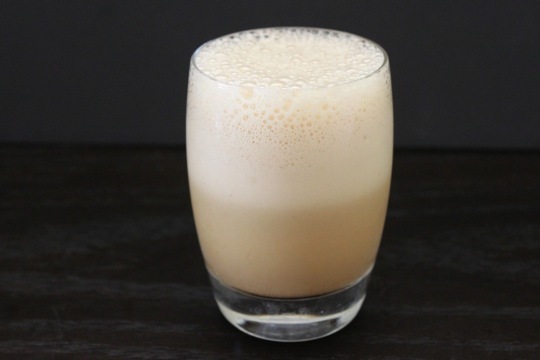
Instructions
Let the coffee cool slightly, then whisk in the eggs. Cool in freezer for 10 minutes.
While the coffee is chilling, combine honey, vanilla, salt, cinnamon, cardamom, turmeric, cream of tartar, coconut milk and ice in the blender.
Blend briefly, so the ice cubes are broken into small pieces.
Pour the chilled Primal egg coffee into the blender. Blend again for 30 seconds or so, until the ice is slushy and the top is frothy.
Egg Coffee
A delicious alternative to Bulletproof coffee, this smooth and creamy coffee drink is brimming with micronutrients.
Ingredients
1 cup (240 ml) coffee
2 pastured eggs
1 tsp sugar
Pinch of salt
Instructions
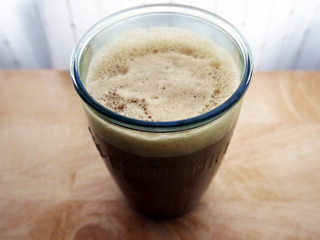 Beating the eggs together, whole, as if you were making scrambled eggs (or blend them). For a 1-cup dose of coffee, use two whole eggs. Once the eggs are beaten or blended, slowly drizzle in the coffee. You don’t want to cook the eggs. You want them to stay creamy. If you’re concerned about the avidin in the raw white, dump the coffee in to ensure maximal heat exposure. Otherwise, just drizzle.
Beating the eggs together, whole, as if you were making scrambled eggs (or blend them). For a 1-cup dose of coffee, use two whole eggs. Once the eggs are beaten or blended, slowly drizzle in the coffee. You don’t want to cook the eggs. You want them to stay creamy. If you’re concerned about the avidin in the raw white, dump the coffee in to ensure maximal heat exposure. Otherwise, just drizzle.
A higher egg:coffee ratio (using a large shot of espresso, for example) for a stronger coffee flavor works well, too.
Add a little sweetener plus some salt to make the coffee taste like a liquified custard.
Vanilla Collagen Fuel Coffee
The sweet vanilla flavor and healing collagen found in Primal Kitchen® Collagen Fuel are a superior alternative to sugary, flavored coffee drinks.
Ingredients
5-8 ounces of brewed coffee
1 scoop of Vanilla Primal Kitchen Collagen Fuel
Instructions
Fill your mug about 1/4 the way with brewed coffee. Mix one scoop of Primal Kitchen Collagen Fuel well enough to make a paste. (I use Vanilla, but Chocolate would work well for a mocha flavor if you prefer.) Then fill the remainder of your mug with coffee. Stir well, and enjoy!
How to Make Cold Brew
Cold brew is all the rage and for good reason; it’s less acidic and has a bolder flavor than iced coffee, which can taste watered down or bitter. As opposed to iced coffee, which is brewed hot then chilled, cold brew is brewed in cold water. Buying cold brew from a coffee shop can be spendy. Luckily, it’s easy to make at home. Here’s how to make cold brew:
A ratio of 1 cup whole coffee beans to 4 1/2 cups water will give you a strong brew.
Don’t grind the beans too finely or they’ll cloud up the coffee. A coarse grind is better for cold brew.
Put the coarsely ground coffee beans in a glass pitcher, tall container, or coffee press. If using a pitcher or container, you’ll need cheesecloth to strain the grounds later.
Slowly pour in the 4 ½ cups cold water, gently stirring as you pour to moisten all the coffee grounds.
Lightly cover the container, or put the lid on the French press (don’t press it down). Let stand in the refrigerator 12 hours.
If using cheesecloth, line a fine mesh sieve with the cheesecloth and set the sieve over a large pitcher or deep container. Pour the coffee into the cheesecloth-lined sieve and give the water a few minutes to filter through the grounds.
If using a French press, simply press down the plunger and push the grounds to the bottom.
Once the grounds are separated from the coffee, your cold brew is done!
Cold brew keeps well for a week or more in the refrigerator.
Tip: Don’t want to dilute your cold brew at all? Make coffee ice cubes to float in your cup of cold brew.
That’s all for me, folks. I’ll wager many of you have your own creations to share. Offer your ideas and any questions on the board, and take care.
The post 7 Healthy Coffee Ideas for Every Primal Taste appeared first on Mark's Daily Apple.



August 8, 2017
12 Ab Exercises to Stabilize Your Core
 Today’s awesome post is offered up by Jennifer Dene, of PaleoHacks.com. Enjoy, everyone!
Today’s awesome post is offered up by Jennifer Dene, of PaleoHacks.com. Enjoy, everyone!
The core muscles are responsible for supporting the spine, balancing the body (1), facilitating functional movement, and limiting low back pain (2). As they’re located at the center of your trunk, you can think of them as the mainframe that controls how you move. Try these 12 ab exercises to stabilize your core and turbocharge your body today.
Despite what the glossy fitness magazines are telling you, crunches are not the best way to strengthen your core. It’s important to understand that strengthening your core doesn’t mean doing isolated abdominal exercises. In fact, true core strength comes from toning all the muscles from your sternum to your pubic bone, which include those found in the stomach, back, butt, chest and upper thighs (3).
Learning to “hug” your abdominal and back muscles towards your spine, engage the pelvic floor, and using controlled breathing is the key to core stabilization. The 12 ab exercises that you’ll learn today will teach you how to do this in four key positions: lying on your back (supine), stomach (prone), side, and from all-fours. The less contact you have between your body and the ground, the more challenging it will be for your core muscles to support you—this is why a full plank is a much harder exercise than supine marching.
Once you’ve developed core strength in a relatively static position, as you’ll learn below, you can then safely increase the challenge and intensity of your movements while maintaining that stability.
But before we dive into the routine, here is a brief summary of the four primary core muscles. A healthy core relies on the ability of these muscles (transversus abdominis, multifidi, pelvic floor, and internal/external obliques) to co-ordinate and co-activate as needed.
Core Muscle #1: Transversus Abdominis (TA):
Found in your deep low belly, these muscles are the most important abdominal muscles for supporting the spine and improving posture.
Core Muscle #2: Multifidi (MF):
This is a deep muscle that runs along the back of the spine and, together with the other core muscles, acts to stabilize the low back and pelvis before performing movement of the arms or legs.
Core Muscle #3: Pelvic Floor (PF):
The pelvic floor is a hammock of muscles that support the internal organs, stabilize the pelvic girdle, and assist in strengthening the abdominals (4). (They’re also a crucial muscle to know when you need to go to the bathroom but are stuck in traffic!)
Core Muscle #4: Internal Oblique (IO):
The oblique abdominals are made up of two different muscles: the internal and external obliques. They function to support the abdominal wall, compress the abdominal cavity, rotate the trunk and flex the spine from side-to-side. The internal oblique is positioned above TA and below the external oblique.
Now that you can visualize the muscles you’ll be working, let’s move on to performing 12 of the best ab exercises for core stabilization (5). This routine progresses from beginner to advanced; start at the beginning and move on as you feel ready.
12 Ab Exercises to Stabilize Your Core
The letters below represent which of the four core muscles previously discussed will primarily activate during each exercise.
Marching (TA, PF)
Lie on your back, spine in neutral (a gentle curve in the low back and a flat pelvis), and feet flat on the floor. Inhale to prepare the body. Exhale, engage TA by gently drawing the belly button towards your low back, and then lift the right knee to 90º above the hip bone. Inhale, gently place the foot back down. Exhale, lift the left knee up. Inhale, place it back down. Continue to alternate for 10 repetitions on each leg. DO NOT MOVE your spine or pelvis throughout this exercise, and keep your abdominal wall flat.



Dead Bug (TA, IO, MF)
Lie on your back with your spine in neutral and both knees lifted to 90º directly over the hips. Reach your arms straight up to the ceiling, wrists above your shoulders. Inhale to prepare. Exhale, extend the right leg forward and reach the left arm back, without moving anything else in the body. Inhale, return to the starting position. Exhale, extend the left leg forward and reach the right arm back. Inhale, return to the starting position. Continue to alternate for 10 repetitions on each side. DO NOT MOVE your spine or pelvis throughout this exercise, and keep your abdominal wall flat. To modify: eliminate moving the arms.



The Hundred (TA, MF, PF, IO)
Lie on your back with your spine in neutral, both knees lifted to 90º directly over the hips and arms down by your side. Inhale to prepare the body. Exhale, lift the head and chest into an upper abdominal curl, and hover the hands a few inches from the floor. Inhale for 5 counts as you pump the arms up and down, then exhale for 5 counts as you continue to pump. Repeat 5-10 total rounds before resting. DO NOT MOVE anything except the arms once the exercise has started. To modify: lower the head.
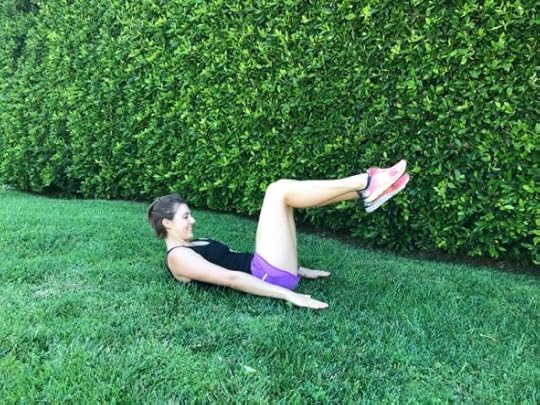
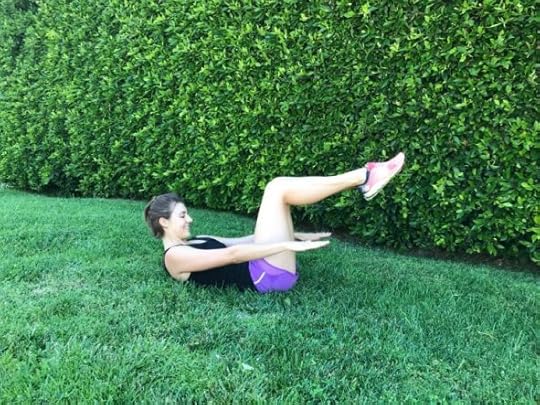


Bridge Marching (MF, IO)
Lie on your back with your hips pressed up to the ceiling, spine flat, feet in parallel position, and arms down by the side. Inhale to prepare the body. Exhale, engage TA by gently drawing the belly button towards your low back, and gently squeeze your bottom and narrow your ribcage before lifting the right knee to 90º. Inhale, place the right foot back down. Exhale, re-engage the core before lifting the left knee to 90º. Exhale, place the left foot back down. Repeat 10 total repetitions, 5 on each leg. Keep the abdominal wall flat, the spine long, and the pelvis stable as you move the legs.



Single Leg Stretch (IO, MF)
Lie on your back with your spine in neutral and both knees lifted to 90º directly over the hips. Inhale to prepare the body. Exhale, lift the head and chest into an upper abdominal curl, and reach the hands to the right knee as you extend the left leg away. Inhale, hold. Exhale, switch legs, holding the left knee and extending the right leg. Inhale, hold. Alternate for 10 total repetitions, 5 on each leg. Keep the head, chest, spine and pelvis completely still as you move the legs only.
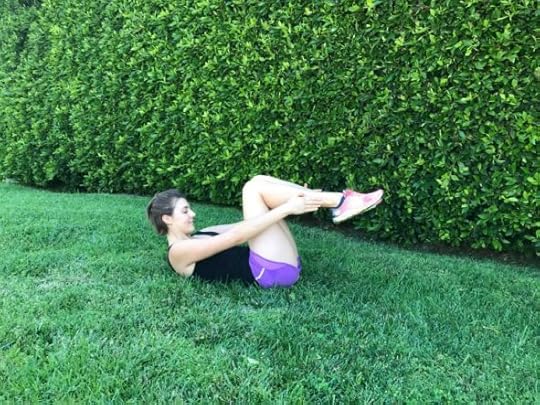

Prone Leg Lifts (MF)
Lie on your stomach, head rested on your hands and legs reaching back against the floor. Inhale, prepare. Exhale, lift the right leg to hover, just one or two inches from the floor. Inhale, lower. Exhale, lift the left leg to hover. Inhale, lower. Alternate for 20 total repetitions, 10 on each leg. DO NOT ROCK your body weight side-to-side as you move the legs.
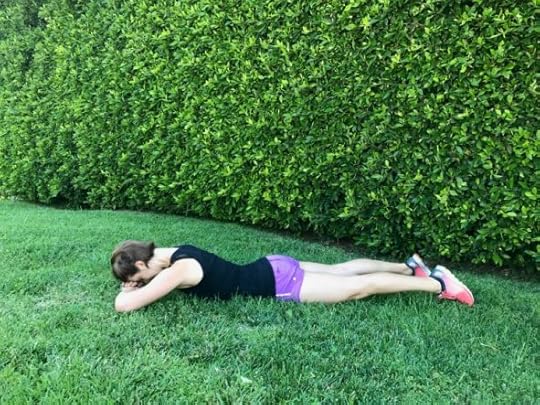
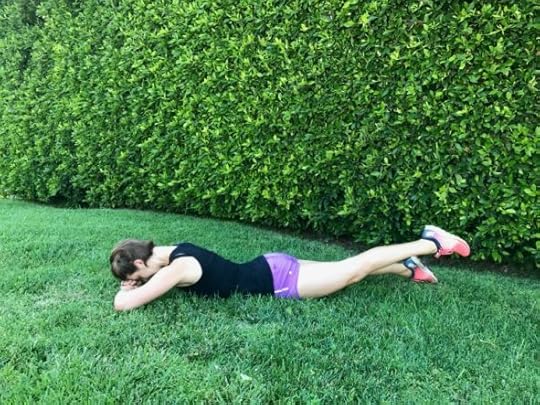

Clam (MF, IO)
Lie on your side, resting your head along your bottom arm. Both knees are bent and stacked, with the heels in line with the sit bones. Keeping the pelvis completely still, exhale to rotate the top knee towards the ceiling, turning the top inner thigh forward. Inhale, lower the knee back down. Repeat 10-15 repetitions on this leg before changing to the other side. DO NOT MOVE anything except the top knee and thigh; you should feel a gentle activation in the low back, underside waist and outer hip.


Spinal Balance (TA, MF, IO)
Start on all-fours with the wrists under shoulders and knees under hips. Engage TA by gently drawing the belly button towards your low back, keeping your spine long and neutral; keep the abdominals like this for the rest of the exercise. Exhale, extend your right leg back and reach your left arm forward. Inhale, lower the limbs. Exhale, extend your left leg back and reach your right arm forward. Inhale, lower the limbs. Continue to alternate for 10 total repetitions, 5 on each side. DO NOT MOVE the hips, shoulders or waist as you perform this exercise.



Knee Hovers (TA, MF, PF, IO)
Start on all-fours with the wrists under shoulders and knees under hips. Tuck the toes. Inhale, prepare. Exhale, engage TA by gently drawing the belly button towards your low back, keeping your spine long and neutral, and then float the knees one inch from the floor, without changing the shape of the spine. Inhale, hold. Exhale, lower the knees down. Continue for 5-10 repetitions.


Plank Step Backs (TA, MF)
Start on all-fours, with the wrists under shoulders and knees under hips. Engage TA by gently drawing the belly button towards your low back, keeping your spine long and neutral; keep the abdominals like this for the rest of the exercise. Inhale, step the right leg back and tuck the toes under; exhale, step the left leg back and tuck the toes under (you’re now in full plank position). Inhale, lower the right knee back down; exhale, lower the left knee back down. Do 5 repetitions starting with the right leg, and 5 repetitions starting with the left leg. DO NOT MOVE the hips, shoulders or waist as you perform this exercise.

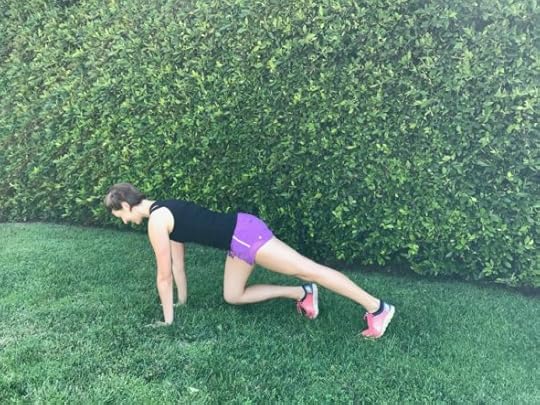

Plank Leg Lifts (MF, TA)
Start in plank position, with the wrists under the shoulders and feet hip-width distance apart. Inhale, prepare. Exhale, float the right foot up and away from the floor without moving the pelvis. Inhale, place it back down. Exhale, float the left foot up. Inhale, place it back down. Continue to alternate for a total of 10-20 repetitions. Note: the core remains engaged throughout this entire exercise!



Side Plank Hip Lifts (modified and full) (IO, MF)
Start on your right side, with the right forearm and hip on the floor, legs straight (advanced) or bent (modified). Exhale, engage your obliques by narrowing your waist before lifting the hip up and away from the floor. Inhale, tap the hips down. Exhale, lift the hips up. Continue for 6-12 repetitions before switching sides.




Thanks again to Jennifer Dene from Paleohacks for today’s post. Comments, questions about ab workouts or any other facet of Primal fitness? Share your thoughts below, and have a great week, everyone.
The post 12 Ab Exercises to Stabilize Your Core appeared first on Mark's Daily Apple.



August 7, 2017
Dear Mark: Collagen Peptides, Fasting vs Sleeping, Dog Bone Broth, and Pork Broth
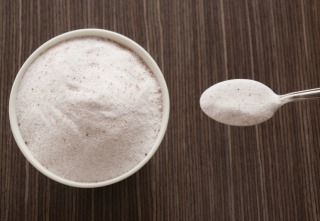 For today’s edition of Dear Mark, I’m answering four question. First, are collagen peptides just as effective as bone broth or other collagen sources? Second, how should I choose between IFing or sleeping like a baby using pre-bedtime nutrients that may impede autophagy? Next, I explore whether you should be making dog bone broth (it’s not what you think, so don’t worry about that). And finally, what are some of my favorite pork bone broth recipes?
For today’s edition of Dear Mark, I’m answering four question. First, are collagen peptides just as effective as bone broth or other collagen sources? Second, how should I choose between IFing or sleeping like a baby using pre-bedtime nutrients that may impede autophagy? Next, I explore whether you should be making dog bone broth (it’s not what you think, so don’t worry about that). And finally, what are some of my favorite pork bone broth recipes?
Let’s go:
Nicole asks:
Hello – I am wondering if anybody has any opinions on the Pacific Organic Bone Broth one can get at Costco. I’m skeptical it is the “good stuff.” Also, do collagen peptide powders offer the same benefits?
I haven’t tried the Pacific broth, but a good rule of thumb is to look at the protein content on the label. If it’s high, you can assume it’s high in collagen.
Collagen peptides appear to have many of the same effects as broth or straight collagen or gelatin powder. They should. They’re made of the same stuff, only more digestible.
Collagen peptides improved body composition, increased fat free mass, and boosted strength in sarcopenic (muscle-wasting) older men. No, collagen amino acids don’t directly contribute to muscle protein synthesis, but they are protein-sparing—when you eat collagen/gelatin/collagen peptides, you need fewer amino acids from more androgenic sources to get the same effect.
Collagen peptides derived from beef bone and pork skin improved quality of life and subjective pain levels compared to placebo in osteoarthritis patients. Just like gelatin/collagen does.
Drinking fermented milk with added collagen peptides increased collagenous amino acid levels in plasma.
Peptides certainly work. But so does straight-up collagen or gelatin (or bone broth, for that matter).
Stefan M. wonders:
Hello, Mark! I have a question. I’m a fan of the IF protocol, but I like to eat a tablespoon of honey, of coconut oil, and drink a big mug of bone broth 30 m – 1 hr before sleep.
It knocks me out good. I’m following your suggestions for sleep!!
The problem is that my schedule is most compatible with a eating window from 8 AM to 12 PM, so say I drink the bone broth at 9 PM; I fear it could affect the autophagy effects of fasting.
Are the quantities mentioned going to break fasting-induced autophagy? If so, how could I make it up, if I still drink before bed because it’s so helpful?
Should I try to make a compromise or, say, add 2 daily-long fasts a week; or one 5 day-long fast a month, or whatever, for enhanced autophagy? What would be most effective?
If I cyclically switch between a carb-loaded crossfit training period (high stress and high energy requirements) and a more relaxed ketogenic weightlifting training period (maintenance rather than constant pushing), what’s the best course of action for each scenario?
On the hierarchy of health decisions, sleep trumps almost everything else. If a spoonful of honey, a mouthful of coconut oil, and a big mug of bone broth are the key to getting you 8 hours of solid sleep a night, it’s worth giving up a compressed eating window. And besides, bad sleep kills autophagy.
You could try introducing one intervention at a time. Try the broth alone at night for a week. Try the honey alone at night for a week. Try the coconut oil alone at night for a week. You may not need all three to get the desired effect. Broth alone could do it.
As to the last question:
I find keto-based strength training works very well with both a compressed eating window of 6-8 hours or occasional 24-hour fasts.
For CrossFit, don’t fast every day, but make sure your fasts fall on days you don’t train. A fast could be a full 24-hour one or a compressed eating window.
I don’t think 5-day fasts are necessary. It sounds like you’ve got your ducks in a row. You’re sleeping well, training regularly, dipping into keto—you’re promoting plenty of autophagy. Just not convinced a 5-dayer offers anything special to someone like you, except maybe as a feat of endurance and courage and fortitude.
Which is important, too.
Pippa asks:
I have a question- my butcher sells bag of bones for $2. They would be perfect for broth making, however they are labeled “dog bones” and are not stored cold (they just sit in a trolley in the middle of the shop). Would they be safe to use for broth making?
I wouldn’t risk it.
Bobby Walker asks:
Any pork bone broth recipes out there? I have about 12lbs of pork bones but haven’t had a clue on what to do with them.
Thanks in advance.
I like a simple Asian pork broth.
Put bones in pot, fill with water, bring to boil.
Dump out the water, save the bones. Clean them under running water, making sure to remove as much blood as possible (use a butter knife or chopstick).
Add them back to pot with fresh water, a big wedge of smashed ginger, some green onions, and that’s about it. Maybe a few cloves of garlic.
Simmer or pressure cook until the resultant liquid gels. Season with salt and/or tamari sauce.
Another pork broth I’ve enjoyed is a rich brown one.
Roast the bones plus some onions, carrots, garlic, and tomato paste at 400 for 40 minutes, or until dark and golden brown.
Add contents of roasting pan to pot, cover with water.
Deglaze roasting pan with big red wine, about a half bottle to a bottle’s worth. Keep the heat on so help break down the alcohol.
Add deglazed scrapings and a bay leaf to the pot.
Simmer or pressure cook until gel occurs.
Vastly different from the more delicate Asian-style pork broth, though. Keep both around for different purposes.
Thanks for reading, everyone. Take care!
Be sure to help out down below with any answers you can expand on.
The post Dear Mark: Collagen Peptides, Fasting vs Sleeping, Dog Bone Broth, and Pork Broth appeared first on Mark's Daily Apple.



August 6, 2017
Weekend Link Love – Edition 463
 RESEARCH OF THE WEEK
RESEARCH OF THE WEEKReducing sugar intake may be the key to reducing health care costs.
In a mouse model of Alzheimer’s, capsaicin (spicy component of hot peppers) improves cognitive function and reduces synapse loss.
Neanderthal genetic introgression may have shaped the modern human brain.
There’s a big link between substance abuse and sleep loss in adolescents.
Lutein, found in spinach, eggs, kale, and avocado (among others), may counter aging’s effect on the brain.
A new technique promises to remove 99% of BPA from water in half an hour.
Humans have been manipulating forest ecologies for at least 45,000 years.
Even sedentary seniors benefit from HIIT.
NEW PRIMAL BLUEPRINT PODCASTS

Episode 180: Elle Russ and Brad Kearns, Part 1: Hosts Elle Russ and Brad Kearns chat about the long-awaited release of the Primal Endurance Online Mastery Course.
Each week, select Mark’s Daily Apple blog posts are prepared as Primal Blueprint Podcasts. Need to catch up on reading, but don’t have the time? Prefer to listen to articles while on the go? Check out the new blog post podcasts below, and subscribe to the Primal Blueprint Podcast here so you never miss an episode.
INTERESTING BLOG POSTS
If we really want to compress morbidity and increase healthy longevity, we need to focus on the fundamentals of the aging process.
How Bret McClellan used the Primal Health Coach cert to launch and maintain a successful health coach business with his wife.
MEDIA, SCHMEDIA
The war on salt is entirely misguided.
Soybean oil is officially heart-healthy!
EVERYTHING ELSE
A message to vegans from a vegan.
The existence of biology may be a fluke of physics, according to a new hypothesis.
What do our microbiomes say about us?
Psilocybin helps people reconnect with the world, not escape it.
THINGS I’M UP TO AND INTERESTED IN
How I know we’re doing good things: Elizabeth Resnick explains how the Primal Health Coach certification has ignited her passion, fueled her knowledge, and enhanced her business.
Sometimes I feel like we’re living in a Philip K. Dick novel: Professional cuddling on the rise.
I actually think this could reduce healthcare costs: DIY pharmaceuticals.
I tend to agree: A fast mile is more impressive (and realistic) than a slow marathon.
I need a new sponge: So do you, probably.
RECIPE CORNER
Paleo cajun fish tacos with salsa good enough to eat on its own.
Classic paleo coleslaw.
TIME CAPSULE
One year ago (Aug 6– Aug 12)
Primal Performance: How to Stay Cool Under Pressure – Not much else matters if you can’t take the heat.
7 Habits of Highly Successful Primal Endurance Athletes – What the best have in common.
COMMENT OF THE WEEK
“I’d like to hop in for a visit just to knock out a few chin ups on marks famous pergola.”
– I smell a contest, tribal.

The post Weekend Link Love – Edition 463 appeared first on Mark's Daily Apple.



August 5, 2017
Lemon and Sage Chicken in Cream
 Primal lemon and sage chicken in cream is a riff on Jamie Oliver’s recipe for chicken in milk, an unusual recipe with a fervent following. In Oliver’s recipe, a whole chicken is roasted with an odd combination of ingredients: milk, cinnamon, garlic, sage and lemon. That odd combination turns into a roasted bird swimming in an amazing sauce scented with lemon and sage. You really have to try it to believe how good it is.
Primal lemon and sage chicken in cream is a riff on Jamie Oliver’s recipe for chicken in milk, an unusual recipe with a fervent following. In Oliver’s recipe, a whole chicken is roasted with an odd combination of ingredients: milk, cinnamon, garlic, sage and lemon. That odd combination turns into a roasted bird swimming in an amazing sauce scented with lemon and sage. You really have to try it to believe how good it is.
But consider trying this version first, which is richer, creamier and even more succulent. Using bone-in chicken thighs instead of a whole chicken cuts down on the cooking time and guarantees juicy, succulent meat. Using whole cream instead of milk results in a sauce that is rich and smooth instead of curdled.
The combination of whole cream, chicken drippings and butter sends the fat content of this dish soaring, which is a good thing if adding healthy fat to your diet is a priority. This lemon and sage chicken is so good and so easy to make that it’s sure to become a favorite.
Servings: 4 to 6
Time in the Kitchen: 25 minutes, plus 45 minutes in the oven
Ingredients

6 to 8 bone-in chicken thighs, seasoned generously with salt and pepper
1 tablespoon PRIMAL KITCHEN® avocado oil or red palm oil (15 ml)
2 tablespoons unsalted butter (30 g)
8 cloves garlic, skin left on
1 cinnamon stick
?10 fresh sage leaves
?Zest from one lemon (see note below)
2 cups whole cream (1 pint/473 ml)
Instructions

Preheat oven to 375º F/190º C
Recipe Note: For this recipe, strips of lemon zest are better than grated zest. Using a vegetable peeler or paring knife, remove the yellow peel from most of the lemon, being careful to leave the white pith behind. Use a knife to cut the pieces of peel into thin strips.
In an ovenproof skillet that will fit all the chicken, heat the avocado oil/red palm oil over medium-high heat. When the oil is hot, add the chicken, skin side down. When the chicken is nicely browned, flip it over. Carefully tilt the skillet and pour some of the oil out, leaving only a thin layer.
Add the butter, garlic, cinnamon stick, sage leaves and lemon zest. Right when the butter just begins to turn brown, pour in the cream. Bring the cream to a gentle boil and then put the skillet in the oven.
Cook, uncovered, for 45 minutes, until the chicken is done and the sauce is bubbly and thickened.
If needed, add a little salt to the sauce before eating. (The garlic cloves can be easily slipped out of their skins while you eat.)

The post Lemon and Sage Chicken in Cream appeared first on Mark's Daily Apple.



Mark Sisson's Blog
- Mark Sisson's profile
- 199 followers






